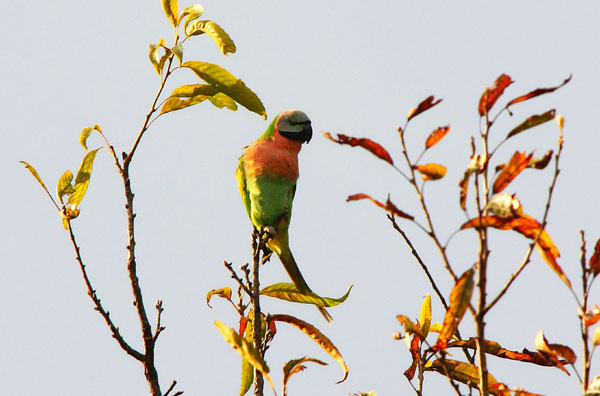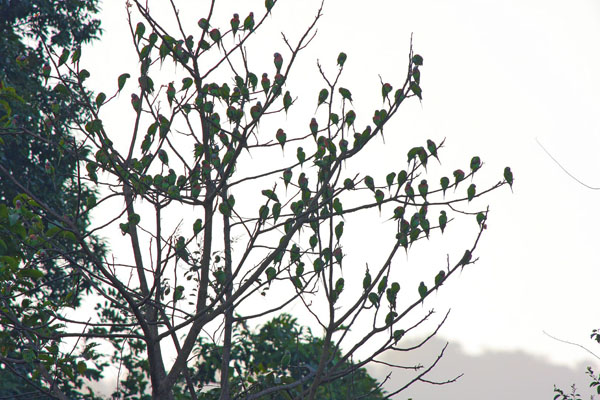Psittacula alexandri
IUCN
LCBasic Information
Scientific classification
- name:Psittacula alexandri
- Scientific Name:Psittacula alexandri,Red-breasted Parakeet,Sichuan parrot, big parrot, big purple-breasted parrot
- Outline:Climbing birds
- Family:Psittaciformes
Vital signs
- length:26-36cm
- Weight:85-168g
- lifetime:25years
Feature
It is the most common parrot in the wild in my country and can imitate human speech after training.
Distribution and Habitat
In China, it is found in southeastern Tibet, southern Yunnan, southwestern Guangxi, Guangdong and Hainan Island, and is more common in parts of southwestern Yunnan. Abroad, it is distributed in India, Southeast Asia and the Greater Sunda Islands.
It mainly inhabits various types of open forests in lowlands and foothills about 2,000 meters above sea level; it also goes to mangroves, coconut forests, farming areas, parks, gardens and suburbs.
Appearance
It has bright colors, a long tail, and a slightly square head. The head and cheeks of the adult bird are purplish gray, the eyes are black, the pillow, back, wings and tail are green, with obvious black moustache, the chest is gray and dyed pink, and the legs and buttocks are light green. The head of the juvenile bird is yellowish brown, and the black mustache pattern is not obvious. The iris is yellow, the male bird has a red upper beak and a black lower beak, and the female bird has a dark brown beak and gray feet.
Details
The rose-breasted parrot is a medium-sized bird, a typical climbing bird, with a strong and powerful beak, a hooked beak, a movable joint in the upper jaw, and a wax film at the base of the beak. The muscular tongue is thick. The feet are short, powerful, and zygomatic, with two toes facing forward and two toes facing backward, suitable for grasping and climbing. The head is grape gray, with green around the eyes, and a narrow black band on the forehead extending to the eyes. The upper body is green, the chin is white, and the throat and chest are grape red or brick red.

It mainly inhabits the foothills of low altitude forests, living in groups, diurnal, and roosting in trees with starlings and crows at night. It is a resident bird. It often moves in groups of more than ten to dozens of individuals. It is good at climbing, and can climb with its beak and feet. It is very agile in climbing up and down. It flies fast and often in a straight line. They usually roam in groups of 10 to 50. Most of them are seen flying low among trees or heading to rural areas. When they reach their destination, they will perch on tall branches. They are quite noisy when flying, and only very quiet when foraging. They have the habit of migrating, and the location of migration depends entirely on whether there is enough food. Occasionally, they will gather with the gray-headed parrots in the same genus to forage in rice fields. Their flying speed is slower than all parrots in the same genus.
Rose-breasted parrots like to move in open areas with forests. They are gregarious and often fly in large groups quickly, forage in groups, and reproduce. Before stopping on a tree to eat or rest, they make a clicking sound with their wings and often make a harsh cry.
Rose-breasted parrots are docile and easy to raise. They can imitate human speech after training. At night, it often lives in trees with starlings and crows. Its food mainly consists of berries, nuts and other fruits of wild plants, as well as seeds, nectar, twigs and young shoots, etc. It also eats grains and insects.

The rose-breasted parrot is the most common parrot in the wild in my country, but due to the serious damage to the forest environment where it lives and excessive hunting, its number has declined significantly, and its protection needs to be strengthened urgently.
It is listed in the second level of the "List of National Key Protected Wildlife in China".








